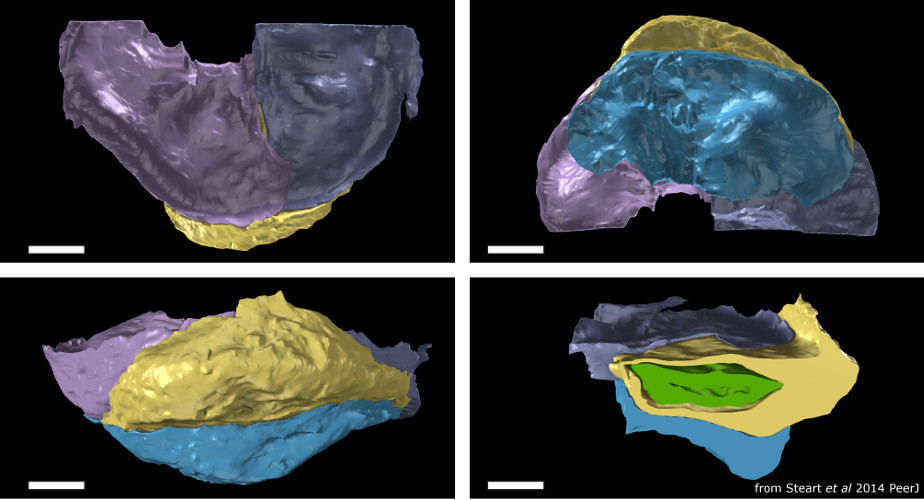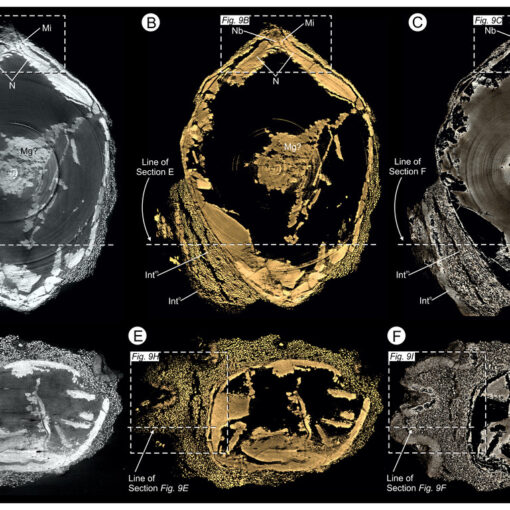Type:
Peer Reviewed Research Paper
Journal:
PeerJ
Year:
October 23, 2014
Authors:
Steart DC, Spencer ART, Garwood RJ, Hilton J, Munt MC, Needham J, Kenrick P
DOI
http://dx.doi.org/10.7717/peerj.624
Abstract:
We document a new species of ovulate cone (Pararaucaria collinsonae) on the basis of silicified fossils from the Late Jurassic Purbeck Limestone Group of southern England (Tithonian Stage: ca. 145 million years). Our description principally relies on the anatomy of the ovuliferous scales, revealed through X-ray synchrotron microtomography (SRXMT) performed at the Diamond Light Source (UK). This study represents the first applications of SRXMT to silicified plant fossils, and demonstrates the significant advantages of this approach, which can resolve cellular structure over lab-based X-Ray computed microtomography (XMT). The method enabled us to characterize tissues and precisely demarcate their boundaries, elucidating organ shape, and thus allowing an accurate assessment of affinities. The cones are broadly spherical (ca. 1.3 cm diameter), and are structured around a central axis with helically arranged bract/scale complexes, each of which bore a single ovule. A three-lobed ovuliferous scale and ovules enclosed within pocket-forming tissue, demonstrate an affinity with Cheirolepidiaceae. Details of vascular sclerenchyma bundles, integument structure, and the number and attachment of the ovules indicate greatest similarity to P. patagonica and P. carrii. This fossil develops our understanding of the dominant tree element of the Purbeck Fossil Forest, providing the first evidence for ovulate cheirolepidiaceous cones from this locality. Alongside recent discoveries in North America, this significantly extends the known palaeogeographic range of Pararaucaria, supporting a mid-palaeolatitudinal distribution in both Gondwana and Laurasia during the Late Jurassic. Palaeoclimatic interpretations derived from contemporaneous floras, climate sensitive sediments, and general circulation climate models indicate that Pararaucaria was a constituent of low diversity floras in semi-arid Mediterranean-type environments.

3D Models:
Pararaucaria collinsonae (All Ovules)

